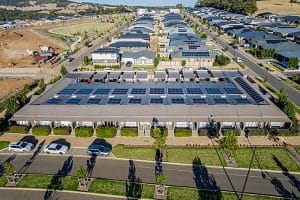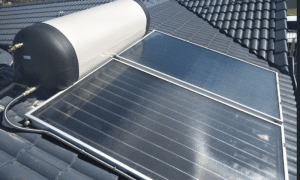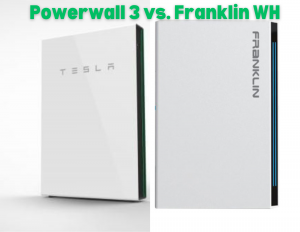The solar power industry, like all industries, has its own jargon, as well as professional organisations and regulators. Reading about solar energy is like hacking through a strange forest populated with VPPs, STCs, kilowatt hours and gigawatts. Energy Matters’ Australian solar energy glossary is intended to help those looking for simple definitions of commonly used industry terms, policies and organisations.
We will be adding to the solar energy glossary throughout 2019.

Energy Matters’ Aussie Solar Energy Glossary
AEMO – the Australian Energy Market Operator is responsible for the administration, operation and also the security of the wholesale National Electricity Market (NEM).
AER – The Australian Energy Regulator makes decisions that promote efficient investment in, and efficient operation and use of, energy services for the long-term interests of energy consumers.
ARENA – The Australian Renewable Energy Agency funds innovation and shares knowledge about renewables, accelerating Australia’s shift to a renewable energy future.
CEC – The Clean Energy Council is the peak body for the clean energy industry in Australia. Its member have to agree to a code of conduct and if they meet its standards they can become accredited installers and retailers.
EV Council – The Australian Electric Vehicle Council launched in May 2017. It represents its members involved in producing, powering and supporting electric vehicles. Its mission is “to accelerate the electrification of road transport for a more sustainable and prosperous Australia”.
How much is 1.21 GW of electricity?
GW – A gigawatt is a billion Watts. You may recall that Doc’s DeLorean in Back to the Future needed 1.21 GW of electricity to travel through time. That’s a lot of power! Back in the real world, Australia’s biggest coal-fired generator, Eraring Power Station in NSW, produces 2.88 GW of electricity at its peak. But coal-fired power stations pale in comparison to the output of hydroelectric plants. The world’s biggest, the Three Gorges Dam in Hubei Province, Central China, produces a massive 22.5 GW.
Inverter – this device converts the DC current coming from your solar panels to the 240 V SC current that your home uses. Some solar panel systems only have one inverter, while others have a micro-inverter attached to each panel. The advantage of this is that if any inverter fails, the other panels can still continue generating electricity.
Kilowatts and kilowatt hours explained
kW – A kilowatt is a thousand Watts. A Watt (W) is a unit of power. A 40 Watt light bulb needs 40 Watts of power to operate.
kWh – A kilowatt hour is a measure in thousand-watt steps of how much energy an appliance uses (or produces) in one hour. A 1,000 Watt microwave running on maximum for one hour uses 1 kWh of energy. A 1 kW solar panel running at maximum capacity for an hour generates 1 kWh of energy. However, in reality, solar panels do not operate at maximum efficiency continuously throughout the day. It’s been estimated that a 5.3 kW solar panel system in Melbourne could generate 7,173 kWh of electricity each year.
MW – A megawatt is a million Watts. A coal-fired power station like the now-retired Hazelwood plant in Victoria could produce about 1,600 MW of power at peak production. In 2017-18 the peak demand in Australia’s National Energy Market was 32,469 MW.
The National Energy Guarantee that wasn’t guaranteed
National Energy Guarantee – The NEG was the energy policy brainchild of former Prime Minister Malcolm Turnbull and then-Energy Minister Josh Frydenberg. The Coalition Party Room endorsed the NEG in August 2018. Despite this, internal opposition to it saw Turnbull face a leadership challenge from the right. Turnbull lost the challenge and Scott Morrison took over. The Coalition then dropped the NEG completely. The NEG’s key features were the obligations it put on energy retailers: an obligation to supply sufficient quantities of “reliable” power to the market; and an obligation to reduce carbon gas emissions over the decade between 2020 and 2030. This is one solar energy definition which may have a limited shelf life.
PV – PV stands for photovoltaic, the electricity-making process that solar panels use. This happens when the sun’s light (rather than its heat) hits the solar cell. This makes the cell’s electrons flow around and this creates an electrical charge. (Another kind of solar energy is thermal, meaning the sun’s heat creates the energy.)
The Small-scale Technology Certificate
STC – the Small-scale Technology Certificate is the backbone of a scheme introduced in 2001 by the Howard Government. Its aim: to encourage people to install solar panels. The scheme has been through a few changes since then, but it amounts to a point of sale discount on the cost of installing solar panels. It does this by awarding solar panel installations a number of STCs, which you or your system installer can sell to deduct from the cost of your solar installation. This deduction can amount to thousands of dollars. However, the scheme is gradually closing down, and the STCs’ value is dropping each year. More details on STCs here.
Tesla Powerwall 2 – this popular rechargeable home battery can store 13.5 kWh of energy. The Tesla Powerwall 2 works with AC current (unlike the DC current of most batteries), so it can feed power directly to your home switchboard. At any one time the Powerwall 2 can discharge 5 kW of power.
Victorian Solar Homes – This is the solar rebate scheme introduced by the Andrews Government in 2018. Eligible households can claim a rebate up to $2,225 on the cost of a solar PV system. Or a $1,000 rebate for the replacement of hot water systems with solar hot water. An interest-free loan then pays the remainder of the cost. The government has also committed to providing half price solar batteries for 10,000 households. This $40 million energy storage plan is part of the Solar Homes initiative. More information here.
Virtual Power Plants – the future of the grid?
Virtual Power Plant – A VPP is when lots of small power generators, like yours and your neighbours’ solar panels, network via computer and the electricity network so they act as one unit. This creates one ‘virtual’ power plant, rather than thousands of little ones. The manager of the VPP controls all the solar power generated by the plant remotely via the internet. The advantage for solar panel owners is that your VPP manager is then selling and buying your electricity on the market and making a profit. You share in this, which gives you cheaper electricity. A VPP is also better for the electricity grid, because grid regulators can control it more easily when thousands of solar systems function as one manageable unit. Trials of VPPs are now taking off around Australia.
Let us know if you’d like to add more definitions to our solar energy glossary.






































